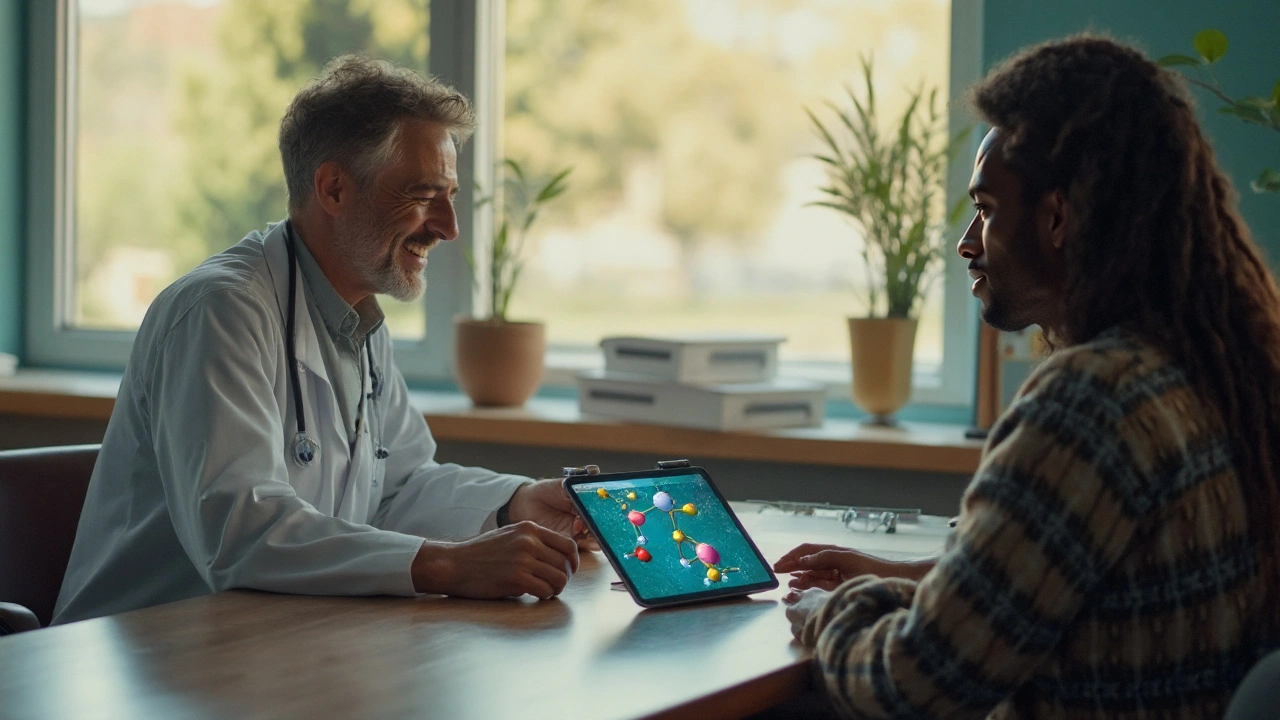Chemotherapy Basics: What It Is and How It Works
When you hear the word chemotherapy, your mind might jump straight to harsh images of pills and needles. In reality, chemo is a collection of medicines that target fast‑growing cells, mainly cancer cells. By disrupting the way these cells multiply, chemo slows tumor growth, shrinks masses, and can even wipe out invisible cancer cells that have spread.
Most chemo drugs travel through the bloodstream, so they can reach cancer wherever it is. Some are given as an IV drip, others as pills you swallow, and a few come as injections under the skin. The exact mix depends on the type of cancer, its stage, and how your body is expected to handle the drugs.
How Chemotherapy Is Given
Doctors plan chemo in cycles. A typical cycle might be one week of treatment followed by two or three weeks of rest. The rest period lets healthy cells recover before the next round. Your oncologist will set the schedule, dose, and drug combo based on lab results and imaging.
IV infusions are the most common method. You’ll sit in a comfy chair while a nurse connects a needle to a vein in your arm. The pump controls the flow, and the whole session can last from a few minutes to several hours. Oral chemo pills are taken at home, but you’ll still need a pharmacist’s check to avoid interactions.
Some newer treatments combine chemo with targeted therapy or immunotherapy. These combos aim to boost the cancer‑killing effect while sparing more healthy tissue. Your care team will explain why a particular combo is chosen for you.
Managing Common Side Effects
Chemo attacks fast‑growing cells, and that includes hair follicles, gut lining, and bone marrow. That’s why you might lose hair, feel nausea, or have low blood counts. The good news is most side effects are temporary and can be eased with the right tricks.
For nausea, start a prescribed anti‑nausea pill before treatment and keep it on hand for a few days after. Small, frequent meals—think crackers, toast, and clear broth—work better than big meals. Ginger tea or ginger chews can calm an upset stomach too.
Low blood counts can make you feel tired or vulnerable to infection. Eat iron‑rich foods like spinach and beans, and stay hydrated. If your white blood cell count drops, your doctor may give a growth factor injection to speed recovery.
Hair loss can be distressing, but it’s usually reversible. Some people wear a soft hat or scarf during treatment. If you’re worried about scalp cooling devices, ask your clinic about them—they can reduce hair loss for certain drugs.
Emotional ups and downs are normal. Talking to a counselor, joining a support group, or simply sharing how you feel with friends can lift the mood. Remember, chemo is a tool, not a verdict; many people finish treatment and go on to live full lives.
Keeping a treatment diary helps you track side effects, medication times, and how you feel each day. Bring this diary to appointments so your doctor can tweak the plan if needed.
In short, chemotherapy is a powerful, adaptable weapon against cancer. Knowing what to expect, how the drugs are given, and how to handle side effects puts you in the driver’s seat of your own care. Talk openly with your medical team, follow the plan, and give yourself space to recover between cycles. With the right approach, chemo can be a stepping stone toward beating cancer and moving on to the next chapter of life.
- By Leona Ashfield
- Health
- 18 Comments
Alkeran (Melphalan) Explained: Uses, Dosage, Side Effects & FAQs
A clear, human‑focused guide on Alkeran - what it is, how it works, dosage options, side‑effects and answers to the most common questions.
